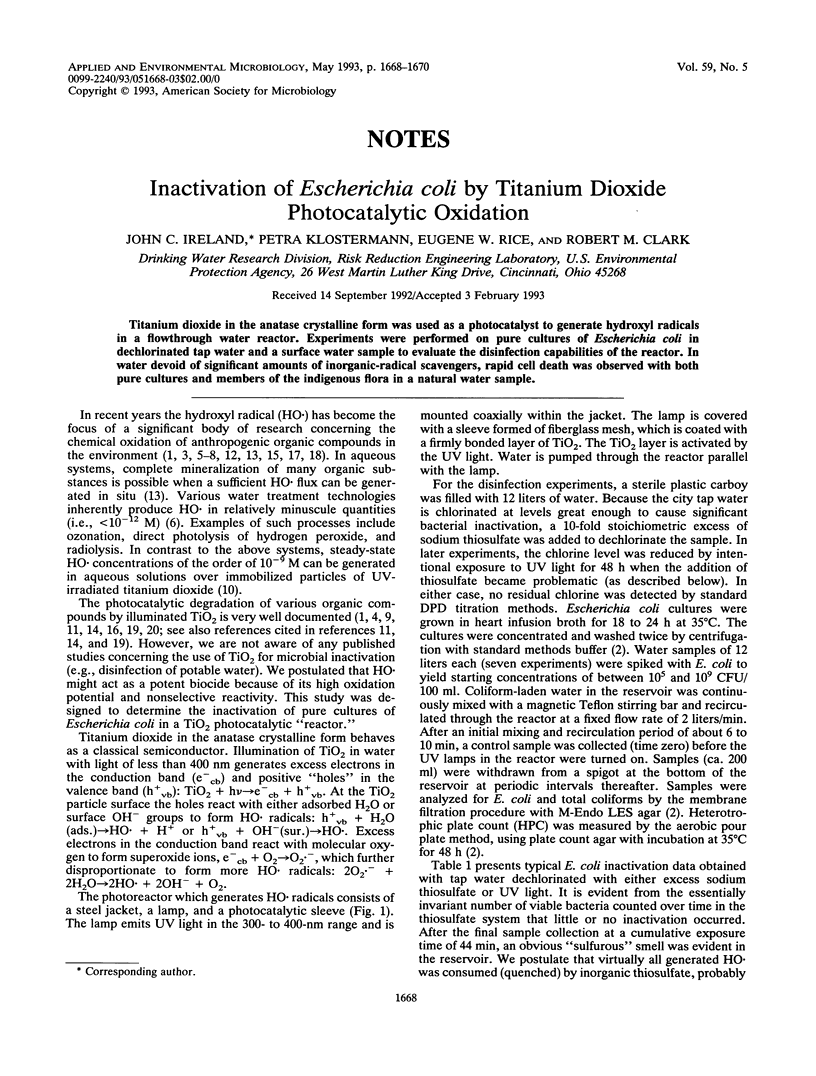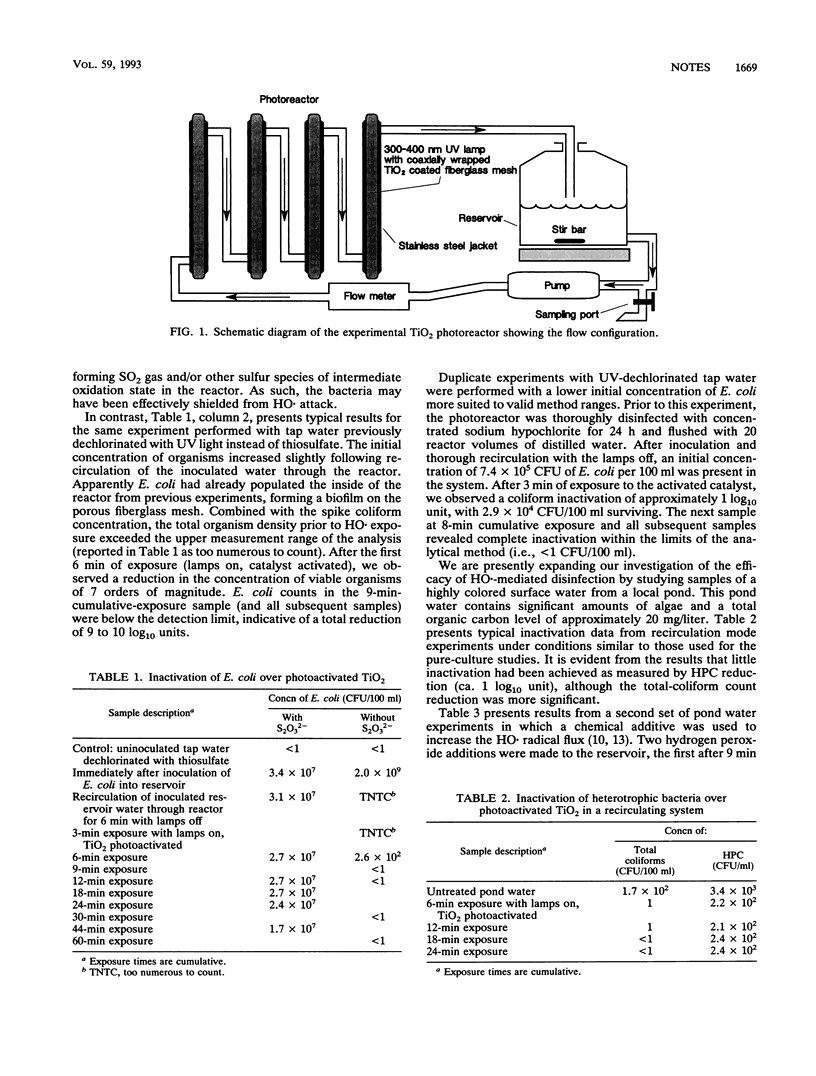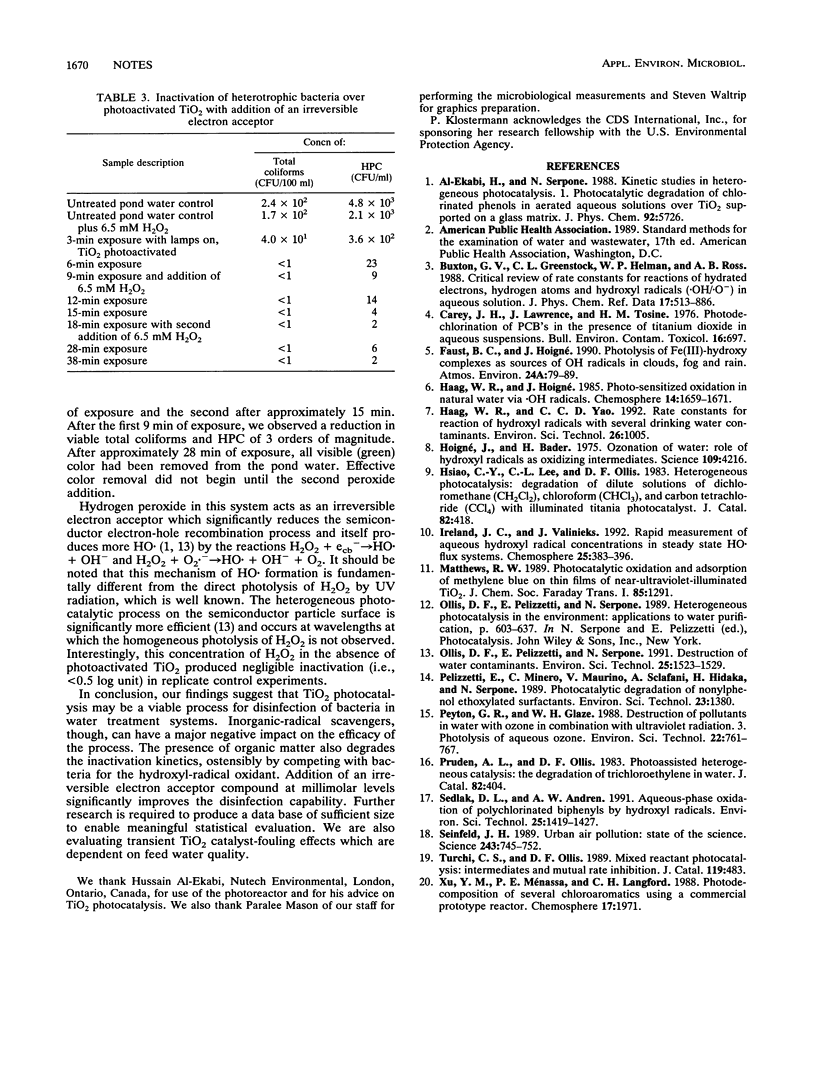Abstract
Titanium dioxide in the anatase crystalline form was used as a photocatalyst to generate hydroxyl radicals in a flowthrough water reactor. Experiments were performed on pure cultures of Escherichia coli in dechlorinated tap water and a surface water sample to evaluate the disinfection capabilities of the reactor. In water devoid of significant amounts of inorganic-radical scavengers, rapid cell death was observed with both pure cultures and members of the indigenous flora in a natural water sample.
Full text
PDF


Selected References
These references are in PubMed. This may not be the complete list of references from this article.
- Carey J. H., Lawrence J., Tosine H. M. Photodechlorination of PCB's in the presence of titanium dioxide in aqueous suspensions. Bull Environ Contam Toxicol. 1976 Dec;16(6):697–701. doi: 10.1007/BF01685575. [DOI] [PubMed] [Google Scholar]
- Seinfeld J. H. Urban air pollution: state of the science. Science. 1989 Feb 10;243(4892):745–752. doi: 10.1126/science.243.4892.745. [DOI] [PubMed] [Google Scholar]


